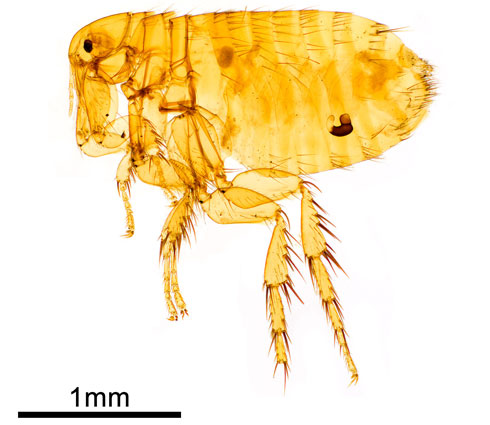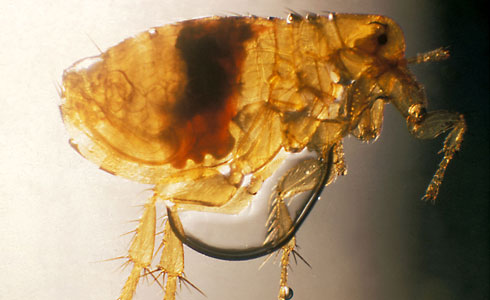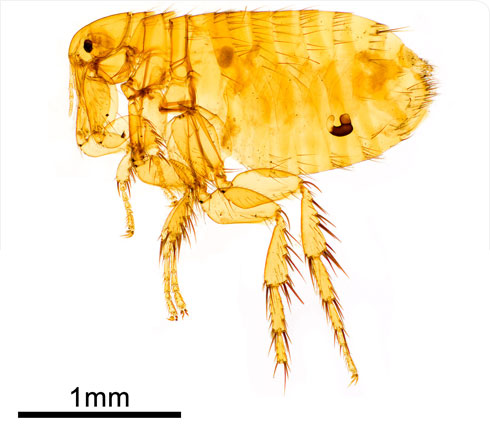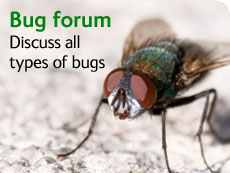Xenopsylla cheopis (plague flea)
Xenopsylla cheopis is the species of flea that carries Yersinia pestis - the bacterium that causes bubonic plague, and is thought to have been responsible for the Black Death.
Nathaniel Charles Rothschild first described it. Because it was first found in Egypt, he named it cheopis after the Pharaoh Cheops who commissioned the Great Pyramid at Giza. The type series - the specimens described by Rothschild - are here in the Museum's collections.
The fleas are heavily armoured, small, wingless insects with bristles and spines that help them cling on to the fur of hair of their hosts.
They have pads just behind the hind-legs that are made of an elastic-like protein that stores huge amounts of energy.
The flea can release the energy from these pads in a split second to jump as high and as far as it needs to as it seeks out a new warm-blooded host.
Species detail
-

Taxonomy
The plague flea is small but deadly. Find out how it has adapted to life on its rodent host.
-

Distribution
Find out where Xenopsylla cheopis originated from, and where you might find it now.
-

Biology
This flea needs a warm-blooded mammal to live on and usually completes its lifecycle in 2–3months. But if it finds itself without a host it can lie dormant for up to a year. Find out more.
-

Behaviour and disease
Bubonic plague has killed millions of people worldwide. Find out how Xenopsylla cheopis fleas transmit the disease.
-

Threats
No fleas are known or suspected to be threatened with extinction, although it is likely that at least some threatened species will be revealed as research progresses.
-
References
More sources of information on the plague flea.
Images

World distribution of plague, 1998.

Female Xenopsylla cheopis, slide-mounted.

Xenopsylla cheopis.
About the author
Miss Theresa Howard
Collections Manager
Department of Entomology
Toolbox
Glossary
Palps
Elongated appendage near mouth used for feeling, eating and movement.
Prehensile
Adapted for grasping.
Tarsi
A section of the leg, usually segmented.

